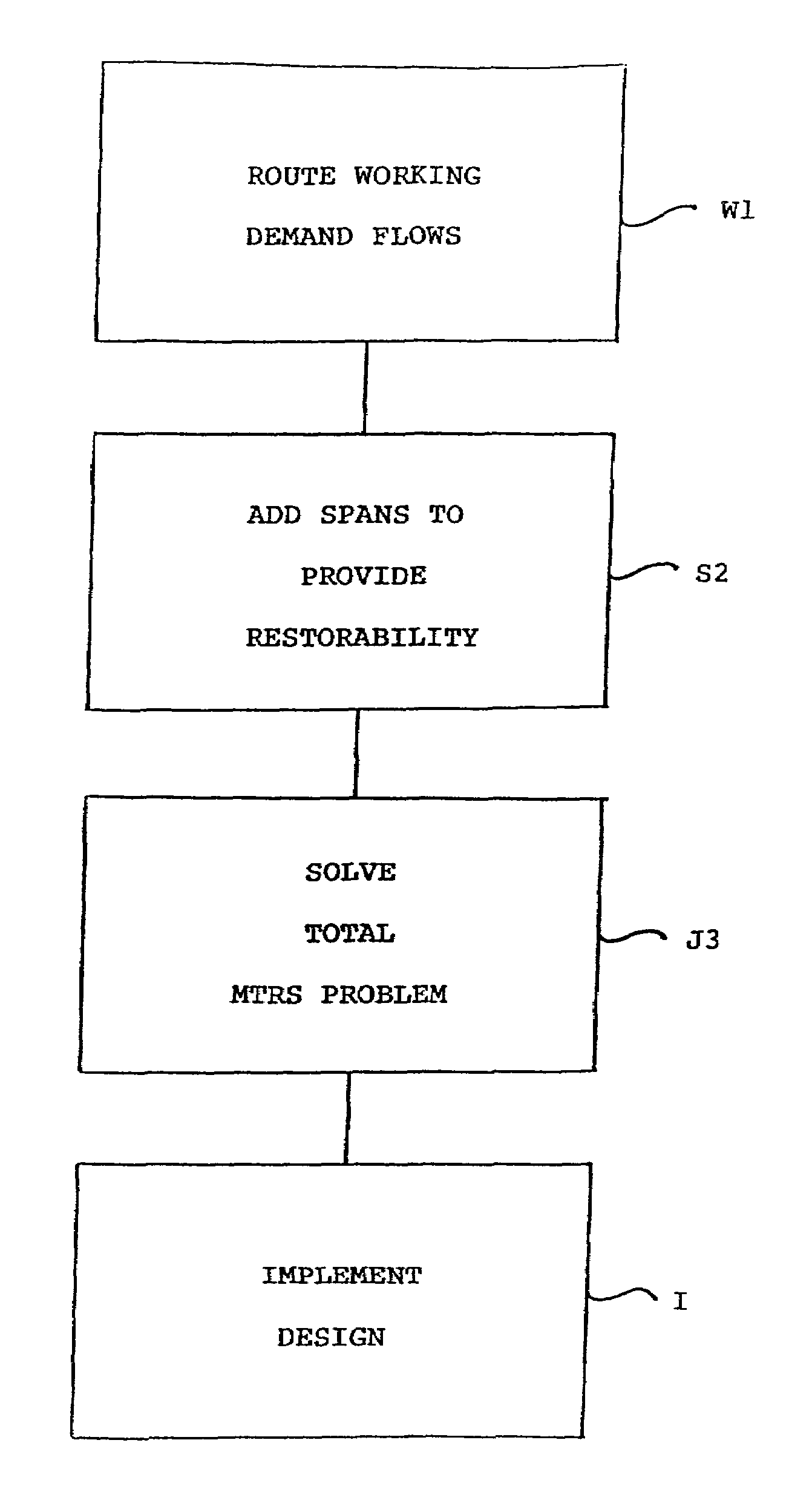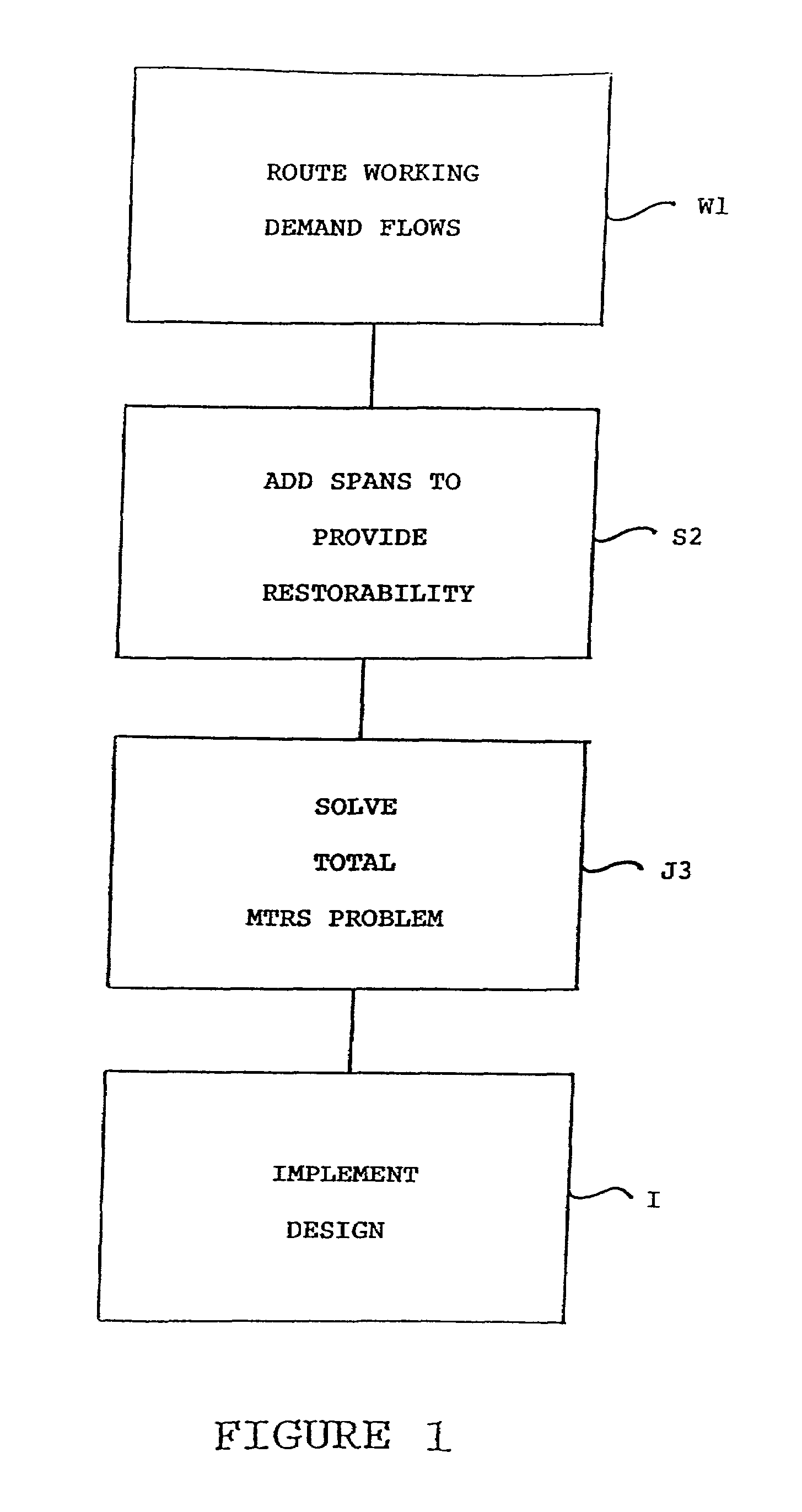Topological design of survivable mesh-based transport networks
a transport network and topological design technology, applied in data switching networks, frequency-division multiplexes, instruments, etc., can solve the problems of reducing the structural availability of the entire network, reducing the computational complexity of solving the complete problem, etc., to achieve fast testing of restorability, reduce the size of the problem, and optimize the capacity design
- Summary
- Abstract
- Description
- Claims
- Application Information
AI Technical Summary
Benefits of technology
Problems solved by technology
Method used
Image
Examples
Embodiment Construction
[0076]The word comprising used in the claims is used in its inclusive sense and does not exclude other elements or method steps being present. Likewise, the use of the indefinite article “a” before a noun does not exclude more than one of the element being present. MTRS is an acronym for master formulation for optimization of topology, working routes and restoration spare capacity.
[0077]In this section we set up a 1 / 0 IP formulation of the complete MTRS problem. In the basic model all N(N−1) directional edge candidates are modelled but if either direction is chosen, its reverse direction is also asserted. There are no length or hop limits on the routing of working or restoration paths, but the model is specifically based on span-restoration as defined above and the set of failure scenarios consists of all single span failures. While the arc-path formulation is efficacious and convenient for the standalone SCA problem, we have to abandon the arc-path method altogether in favour of a ...
PUM
 Login to View More
Login to View More Abstract
Description
Claims
Application Information
 Login to View More
Login to View More - R&D
- Intellectual Property
- Life Sciences
- Materials
- Tech Scout
- Unparalleled Data Quality
- Higher Quality Content
- 60% Fewer Hallucinations
Browse by: Latest US Patents, China's latest patents, Technical Efficacy Thesaurus, Application Domain, Technology Topic, Popular Technical Reports.
© 2025 PatSnap. All rights reserved.Legal|Privacy policy|Modern Slavery Act Transparency Statement|Sitemap|About US| Contact US: help@patsnap.com



